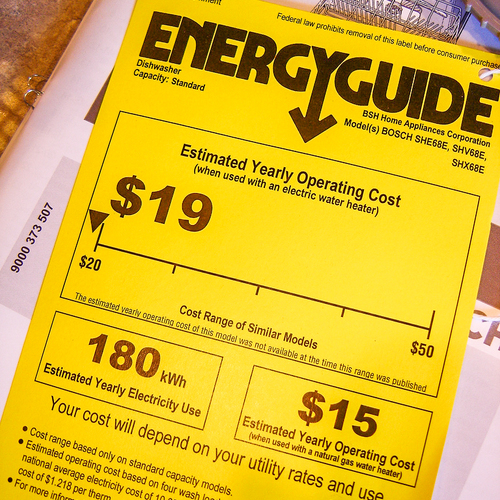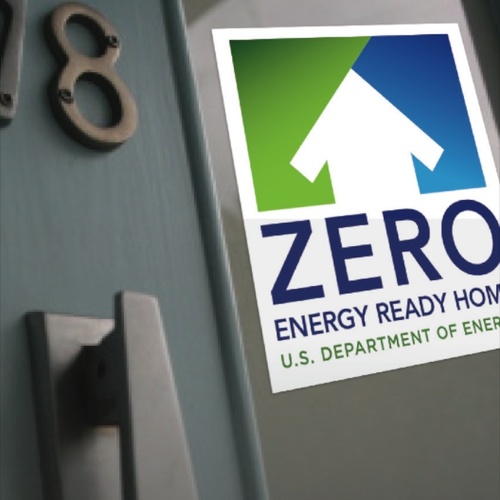
Image Credit: Danny Kelly
Once our construction company was launched on a path toward green building, we knew we had to convince our customers of the advantages of building green. But we quickly found out that our customers weren’t interested in doing anything that added any cost to their homes; so we decided to build our first Energy Star house on speculation.
We met with our third-party rater and were surprised to learn that we didn’t need to change any of our specifications to qualify for Energy Star. All we had to do was build a tighter-than-usual home by improving some of our insulating and air sealing details. For that to happen, we needed to pass the Thermal Bypass Checklist.
Since we were building a spec home, we wanted to keep costs down, so we built the house to our typical specifications. We didn’t include a closed crawl space or any other advanced option.
Choosing a ventilation system
Since we didn’t have much experience building tight homes, we were worried that the ventilation system might put the house under negative pressure. Where would the necessary make-up air come from? What type of ventilation system should we choose?
We met with our rater and HVAC contractor and reviewed all of the options: an ERV, passive fresh air inlets, central-fan-integrated supply ventilation systems, exhaust-only ventilation systems, and so on.
It seemed as if each solution came with at least one new problem. ERVs were expensive and would not necessarily provide make-up air when the dryer or kitchen exhaust hood was on. A passive intake would not condition the air and we would be bringing in very hot and humid air in the summer. The exhaust-only option relied on leaks in the structure to bring in fresh air. A central-fan-integrated supply ventilation system would not help with make-up air for the dryer or range hood, and would only work when the forced-air system was running. Unless we included a Fan Cycler control, the house wouldn’t get any fresh air at all during moderate weather.
For each option, we weighed cost versus value. We decided to connect an intake line to bring fresh outdoor air to the return side of our HVAC ductwork; the fresh air duct had a motorized damper that opened whenever the HVAC fan turned on. We felt with our hot/humid summers, it was important to temper the fresh air as we brought it into the building.
This proved to be a wonderful learning experience on our journey to green. I learned that sometimes there is no single correct or best answer; that every home is different; that we all have our own preferences; and that as long as you think everything through, it’s best to do whatever you feel most comfortable doing.
After all, the builder is the one that is going to have to provide the warranty on the home.
Surprise: leaky ducts
Our pre-drywall inspection went well; we passed on our first try. A little later, we discovered that our framer forgot to install blocking under the kneewalls — a problem missed by our rater. This was surprising, but it was probably a good lesson: we learned that we can’t just rely on our rater to find every problem for us.
We easily passed our blower-door test. Our first-floor ductwork also passed the Duct Blaster test. We were thinking, “So far so good – this stuff is pretty easy.”
However, the second-floor duct system failed the Duct Blaster test. We were very surprised to hear this, as we had contracted with one of the better HVAC companies in town and we had never had any performance issues with any of their systems in any of our previous homes.
I started to wonder how many of our previous homes would have passed a Duct Blaster test. This was the turning point for me – we would never again build a house without performing a Duct Blaster test. What if one of our previous homes had a problem with the ductwork and we did not know about it? That wouldn’t be fair to the homeowner — after all, they paid for a properly performing HVAC system.
I really liked having a third-party verifier inspecting our homes. Because they could find something that we had overlooked, they could help us avoid costly warranty issues down the road.
Our duct problem was easily corrected, and we ended up with a HERS Index of 78.
Extra expenses were minimal
Back then, our building code mandated low-e windows and air conditioners with a minimum SEER of 13. For our Energy Star spec house, our only extra expenses were for certification, the ventilation system, backing up the knee walls with an exterior air barrier, and extra air-sealing work.
We spent about $2,000 more than we typically would have on this home. After finishing the house, we made one of our first major green decisions: from now on, all of our homes would meet the Energy Star standard.
Danny Kelly is a co-owner of Kelly McArdle Construction in Charlotte, North Carolina.
Weekly Newsletter
Get building science and energy efficiency advice, plus special offers, in your inbox.















2 Comments
Spec. Home
$2k
$2k sounds about right to meet minimal E*. The question is did you sell it with the added costs incorporated into the price? How long was it on the market and did the fact it was certified make a difference to the owner?
Spec. Home Sales
Yes Bruce - we did include this cost in our budget when we developed our sales price. Unfortunately, we finished this home just as the market was beginning to go down so did not get our asking price and did take almost a year to finally sell it, so our results probably are not a great measuring stick to use as a rule of thumb. Most of the people that looked at the home and ultimately the purchaser were happy that it is was Energy Star but none made a huge deal out of it, we do not think it was a deal maker by any means. Currently, most people looking at homes do not really understand what green homes and certifications mean. Hopefully through sites like this and others the good news will spread. Our local Multiple Listing Service just added green certifications and HERS to their format so hoping small steps like this will help educate the public.
Log in or create an account to post a comment.
Sign up Log in